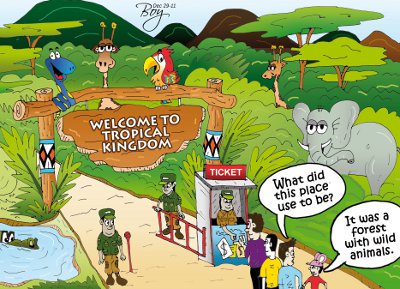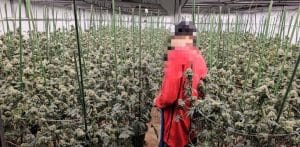Sunday Opinion: Nesting sustainable development

PHUKET: The Phuket Gazette would like to join the Phuket Governor in wishing all of our readers a happy, healthy and prosperous 2012. [Click here to read the governor’s column in the current issue of our newspaper.]
The past 12 months have seen continued growth in the tourism sector, but Phuket’s ongoing transformation into a vibrant, international destination has not come without a steep price in terms of the environment.
Phuket was largely spared the flooding that inundated much of Thailand over the past year, starting with the floods in the other southern provinces in March.
As bad as those floods were, they paled into insignificance during the catastrophe that left much of the Central Plains flooded for months, killing more than 800 people and causing 1.4 trillion baht in damages, according to World Bank estimates.
With Thais no strangers to deadly inundations, the hearts of people here in Phuket go out to all of those who suffered, and continue to suffer, from the flooding. At the same time, we in Phuket know we need to learn a lesson from it.
All over the island, excavators continue to claw into hillsides and reduce rolling pasture land into flat, ready-to-build-upon plots, stripping them of their protective plant cover and exposing the soil to erosion. Some residents of the island have seen the results firsthand, their homes and places of work crumpled by small-scale landslides.
The effects extend much further than structural damage, however. Even as the island continues the relentless paving of its hills, forests and pastures, most of the topsoil exposed or skinned off in the process of development ultimately finds its way into the sea.
The result is less dramatic than the physical damage we see daily, but no less destructive, killing offshore corals and covering the natural sea floor in life-choking silt.
Perhaps the best bellwether of all is the decline in local sea turtle populations. As the current issue of the Phuket Gazette went to press on Thursday, almost two months into the annual nesting season, there were virtually no reports of nests at any of the traditional sites on the island.
This is despite numerous programs aimed at raising turtles in captivity and the endless CSR-type turtle release ceremonies going back decades.
With a survival strategy evolved over the eons to compensate for huge fatality rates due to predation, healthy female turtles can lay hundreds or even thousands of eggs over their long lifespans. Of these, only two hatchlings need to survive, on average, to keep populations stable.
But Phuket is obviously losing the battle to achieve that.
The inability of our coastal waters to support such a modest figure speaks volumes. We can only hope that 2012 is the year local officials take measures to better prevent erosion, encroachment, illegal fishing practices and other deadly factors that have combined to drive Phuket’s most iconic creature onto the brink of extinction along the Andaman coast.
Latest Thailand News
Follow The Thaiger on Google News:


























